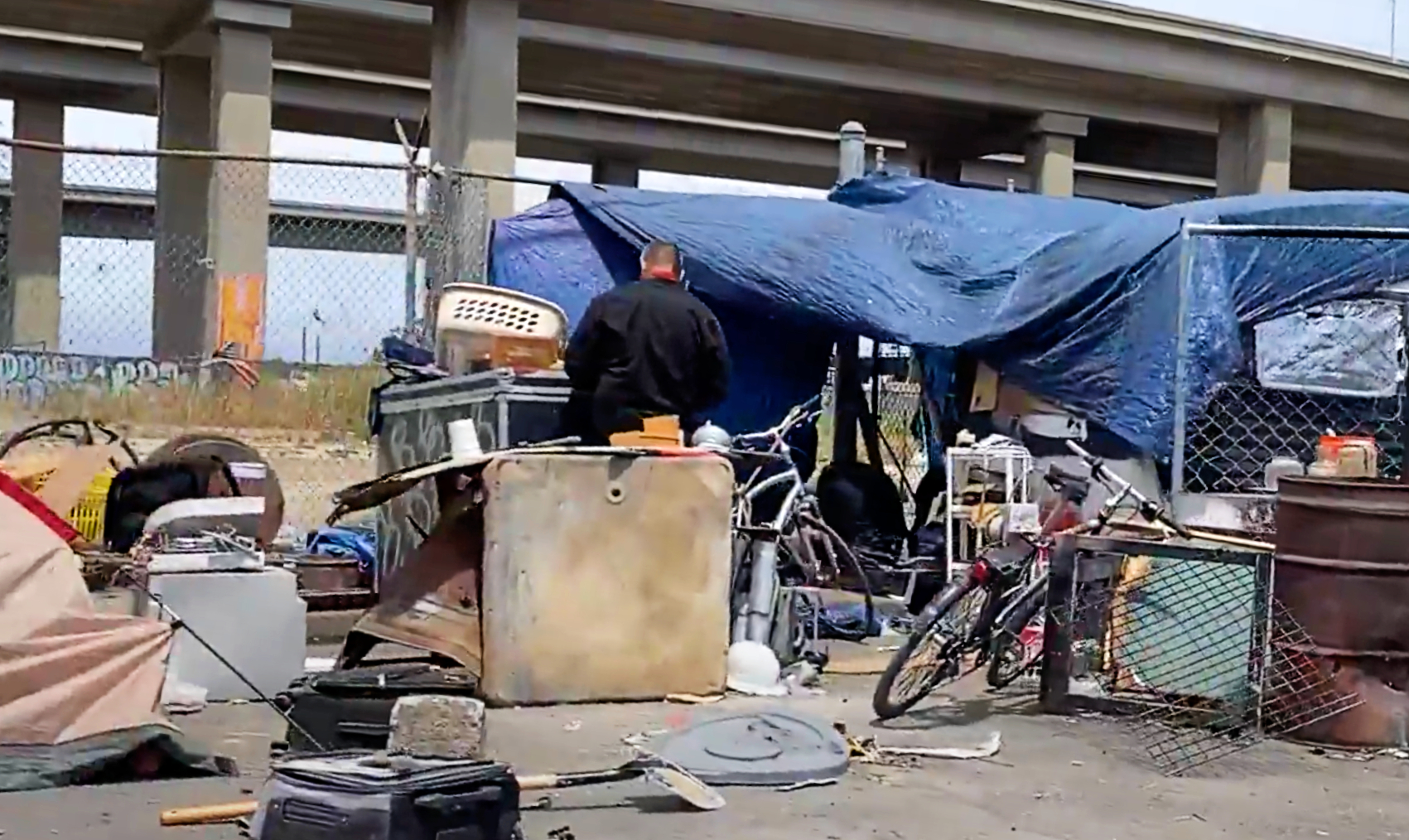California Gov. Gavin Newsom announced Oct. 4 that the state is awarding $130.7 million to 18 local governments to remove homeless encampments, provide shelter, and offer supportive services and care to impacted individuals.
“We’re supporting local communities’ efforts to get people out of encampments and connected with care and housing across the state,” Newsom said in a press release. “It’s important and urgent work that requires everyone to do their part. The state has committed more than $27 billion to help local governments tackle the homelessness crisis—and we want to see $27 billion worth of results.”
Money can be used to provide permanent or interim housing, vouchers, navigation and rehousing services, or to pay security deposits and moving expenses for permanent housing, among other solutions.
The governor said only local governments that comply with state housing and homeless laws will be prioritized for grants, and those not adhering to state laws could risk losing funding, with other enforcement actions possible.
He named Huntington Beach and Norwalk as two examples of noncompliant areas.
“We want partners in this process,” Newsom said in a virtual press conference. “We don’t want sparring partners; we want working partners.”
Sacramento received the largest award of more than $18 million. Mayor Darrell Steinberg said during the press conference that the resources will help those “suffering in tents” and the communities that are impacted by encampments, adding that “homelessness is not hopelessness.”
Riverside County placed second with more than $12.6 million, and the City of Los Angeles’s more than $11.35 million, and San Bernardino County’s $11 million rounded out the top four.
Two heavily populated counties with significant homeless populations, Los Angeles and Alameda—home to Oakland—both failed to receive an award.
The cities and counties that receive funding must agree with all state and federal laws and regulations—including state housing compliance elements that require areas to build certain numbers of affordable housing units.
During Newsom’s tenure as governor, the state has spent $40 billion to create housing and $27 billion to address homelessness, according to his press release.
A report released in April by the state auditor found a lack of coordination and oversight of how the money for homelessness programs was spent and what results were achieved.
“The state has not collected sufficient data on the programs’ outcomes,” the audit reads. “In the absence of this information, the state cannot determine whether these programs represent the best use of its funds.”
The newly announced grants are part of the state’s plan to fund $1 billion worth of grants for its Encampment Resolution Funds program. To date, more than $737 million has been spent on 109 projects statewide, helping nearly 21,000 individuals get off the streets.
The leader of the agency responsible for awarding the grants said the opportunities arose with the passage in March of Proposition 1—a $6.4 billion bond measure that voters approved to fund behavioral health and drug addiction treatment and provide more housing for the homeless.
Nearly 3,400 people will benefit from the new round of funding, and more than 1,500 people will be provided permanent housing, according to the governor’s press release.
“These grants will ensure local communities take a person-centered, trauma-informed approach as they help their most vulnerable residents transition to safe and stable housing,” said Tomiquia Moss, secretary of the state’s Business, Consumer Services and Housing Agency, in the same statement.
Another aspect of the governor’s encampment clearing plan was announced in a July 25 executive order that directed state agencies to address situations that pose an “imminent threat to life, health, safety or infrastructure” and immediately begin clearing encampments on state properties. While he lacks the direct authority to order local governments, he requested they do the same in their respective jurisdictions.
In August, he warned noncompliant cities and counties that they would lose access to funding.
The state has cleared more than 1,200 encampments and removed more than 267,000 cubic yards of debris from the state right of way since July 2021.
Before Caltrans clears camps, advance notice is provided, and local support services are offered to those living on the sites. Personal property is stored for at least 60 days to give people a chance to retrieve their belongings.














